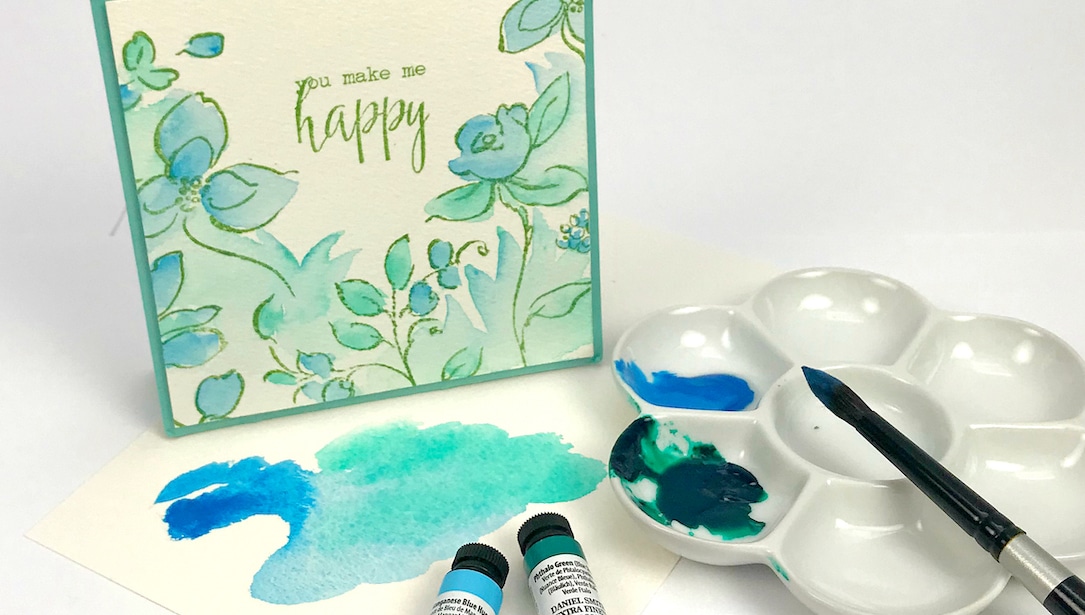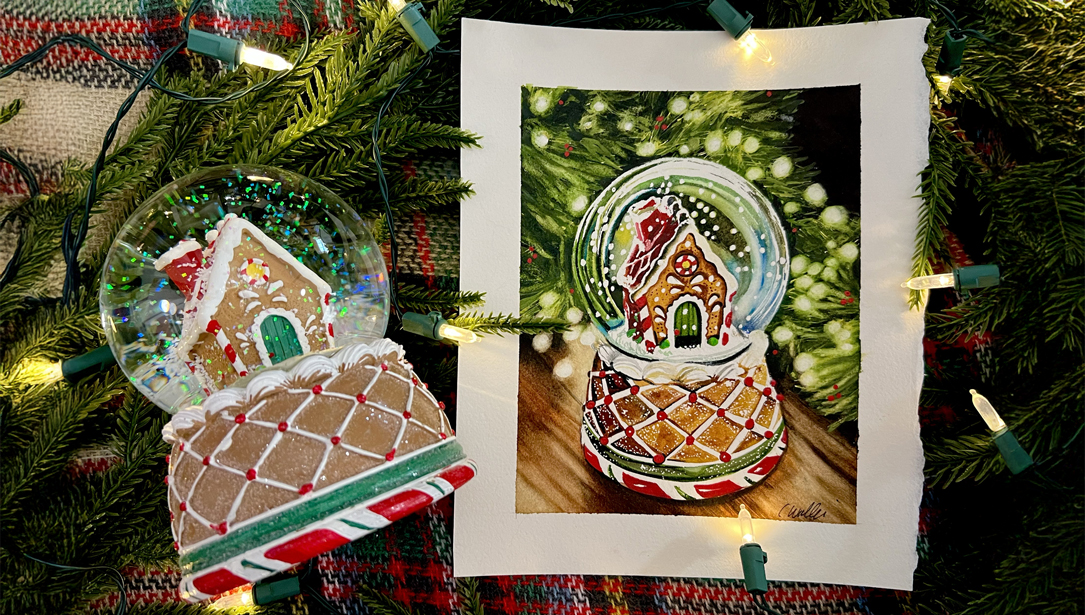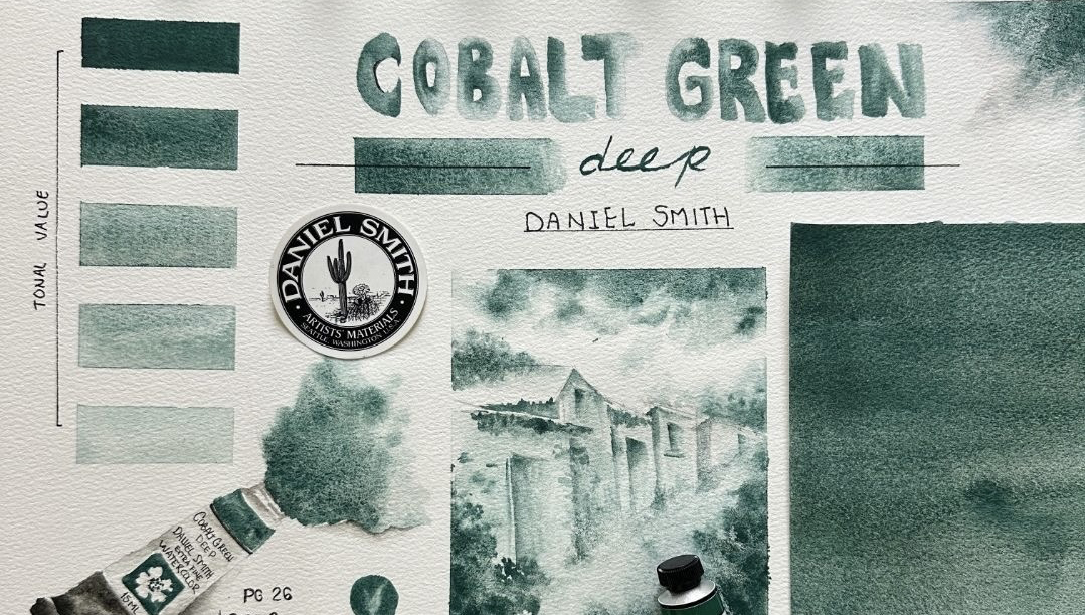In this piece I want to capture the late afternoon light that I love so much about Paris. When the sun is low and the shadows from surrounding buildings begin to climb the walls, there’s something magical about how the rooftops hold on to the light and seem reluctant to let it go. And while the daylight is lingering in the eaves, another story is unfolding at street level, in the deep shadows and glow of red around the cafe. I’d like to walk through the steps I’ve found to depict this particular light.
This is Café Roussillon on the Left Bank of Paris. I paint a lot of cafes with their signature red awnings, they bring such a beautiful center of focus to a piece, and a vibrant splash of color around which to build a story. This one caught my eye because of its contrasts of light and shadow, calm and activity, warmth and coolness. I love the way the upper floors of the building are bathed in bright sunlight, while the café itself is plunged into deep shadow. And yet, there is still so much light glowing off this awning and reflecting in the street below.

Step 1, Pencil and ink sketch of Cafe Roussillon.
Step 1 – I start with a light pencil sketch, then a loose ink sketch using a fountain pen with waterproof ink. This is a technique I’ve used for many years in paintings and sketchbooks in the field, and it’s carried over into this painting. I treat my ink as the darkest parts of a composition that help define structure.
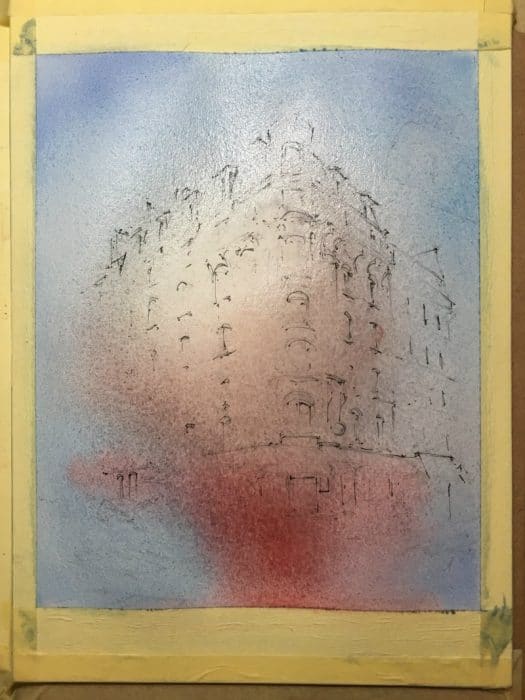
Step 2, Wet on wet technique.
Step 2 – I then use a wet-on-wet technique to apply a three color “bull’s eye” pattern – Raw Sienna in the center, Indian Red circling this, and Cerulean Blue, Chromium on the outside. The trick here is to use a lot of water and constantly rotate the page so the paint flows evenly, creating this soft gradation between colors.

Step 3, When the wash is halfway dry….
Step 3 – When my wash is about halfway dry, I add the Organic Vermilion for the awning, and a mixture of Burnt Sienna and Ultramarine Blue for the roofline. The red may look like a mess, but I purposely paint outside the lines to later create a glow of reflected light.

Step 4, Once the paper is completely dry….
Step 4 – Once the paper is completely dry, I’m ready to add the deeper shadows. For these I again use a mixture of Indian Red and Cerulean Blue, Chromium to create a gray with a lot of character. I vary the mixture and intensity of the colors to build in variety. I also flick clean water in the partially dry wash for added texture. This is a stage I particularly love and am constantly amazed that the darker the shadows become, the brighter the highlights appear. This is when the overall light of the piece comes into its own.
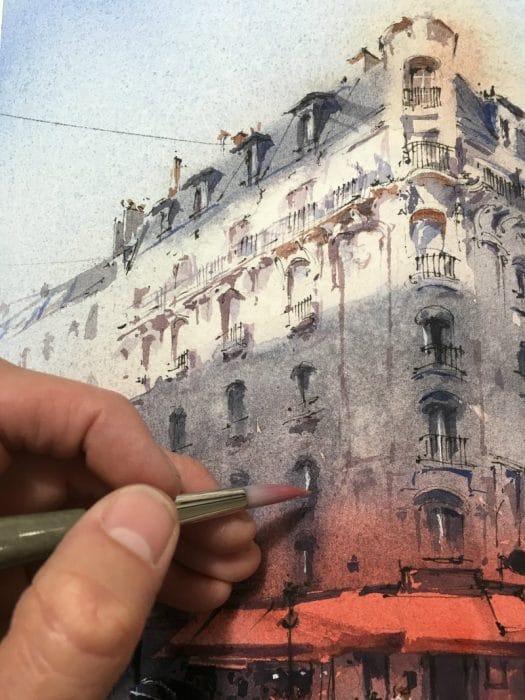
Step 5, Adding details.
Step 5 – Details come last and suddenly things come into focus! I use the same mixture of colors, as well as a little Burnt Sienna Light at the top half of the building. This color I find is perfect for the underneath part of the balconies to give the effect of reflected light, bringing a warmth to the shadows.

“Roussillon Red” by Alex Hillkurtz, 23x29cm
- Cerulean Blue, Chromium
- Ultramarine Blue
- Burnt Sienna
- Burnt Sienna Light
- Indian Red
- Organic Vermilion
- Raw Sienna
Specific Colors:
Paris has a fairly limited color palette, with its blue/gray roofs, white stone, and red café awnings, to me it mirrors the French flag! But within this limitation I find an infinite variety of shades and tones. For this piece I found the combination of the cool blue of Cerulean Blue, Chromium and the earthy granulation of Indian Red to be a wonderfully mature mix. It is varied enough to take me from the late afternoon sky blue, to the warm gray shadows on the building face, to the cool dark of the pavement, and the cool atmospheric distances at the edges of frame. When a vibrant red like Organic Vermilion is added as an accent the whole piece starts to sing.



